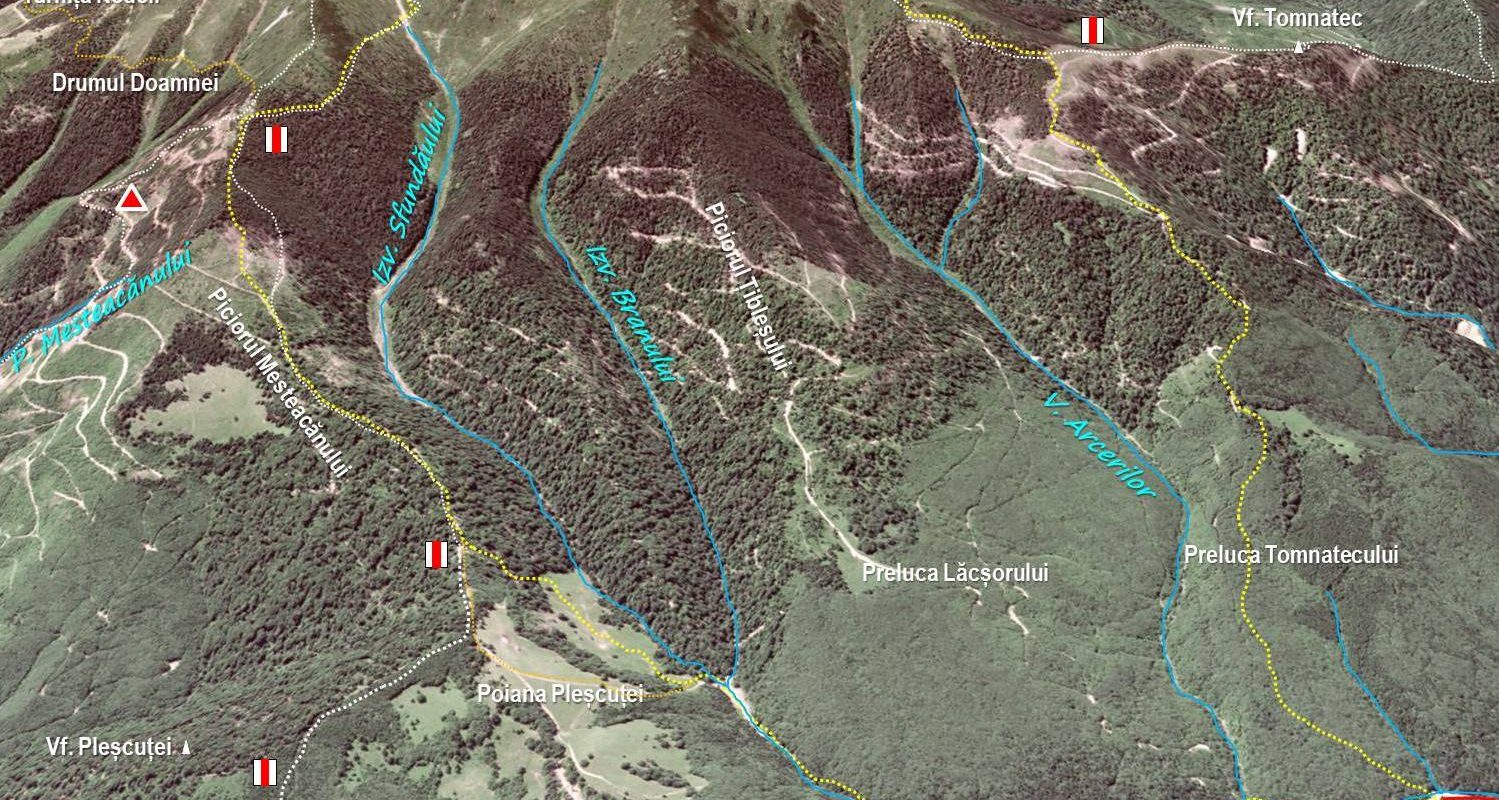
Țibleș – Arcer – Bran Reserve
The Țibleș – Arcer – Bran Natural Reserve is a protected area of great importance for Romania’s biodiversity and natural landscapes, located in the northern part of the country, within the Țibleș Mountains. This place represents a remarkable example of the interaction between mountain landscapes, rich flora, and wildlife, being one of the best-preserved mountainous regions in the Eastern Carpathians.
**Location and Accessibility**
The Țibleș – Arcer – Bran Reserve is situated in Maramureș County, in a relatively isolated mountainous region, which has allowed nature to remain nearly untouched by human influences. The Țibleș Mountains are part of the Eastern Carpathians, with the highest peaks in this region being Țibleș Peak, at an altitude of 1,839 meters, and Bran Peak, at 1,758 meters. These peaks dominate the mountain landscape and offer an impressive panorama over the entire area.
Access to the reserve is not easy, which, paradoxically, aids in its protection. Hiking trails leading to Țibleș – Arcer – Bran are challenging but provide an unforgettable experience for nature lovers. The main access routes start from the nearby mountain villages, such as Dragomirești and Borșa, offering a unique opportunity to explore the wild beauty of the place.
**Geology and Relief**
Geologically, the reserve is characterized by a diversity of relief forms and geological structures typical of the mountainous area. The Țibleș Mountains belong to the volcanic group of the Eastern Carpathians, and the volcanic origin of this region is evident in the landscape shaped by ancient eruptions. Volcanic and sedimentary rocks, especially around the Arcer and Bran peaks, create a variety of formations, such as rocky cliffs and sharp ridges.
The relief is marked by deep valleys, steep slopes, and forested ridges, creating a diversified habitat ideal for numerous species of animals and plants. The landscapes of Țibleș – Arcer – Bran are spectacular, combining dense deciduous and coniferous forests with alpine meadows, where mountain crests rise above the forests and offer panoramic views over the surrounding valleys.
**Flora**
The flora of the Țibleș – Arcer – Bran Reserve is rich and varied, influenced by the altitude and specific climate conditions of this mountainous region. As altitude increases, vegetation gradually changes from mixed deciduous forests to coniferous forests and, finally, to alpine meadows dominating the peaks.
In the lower altitude forests, species such as beech, hornbeam, ash, and birch form a dense and shaded ecosystem, sheltering numerous species of shrubs and herbaceous plants. Higher up, coniferous forests are dominated by spruce and fir, providing essential habitat for the region’s wildlife.
On the alpine meadows and ridges around the Arcer and Bran peaks, flora adapts to extreme climate and altitude conditions. Here, rare and protected plant species can be found, such as the edelweiss (Leontopodium alpinum), rhododendron (Rhododendron myrtifolium), and various mosses and lichens covering the rocks.
**Fauna**
The diversity of fauna in the Țibleș – Arcer – Bran Reserve is remarkable, including many wild animal species typical of the Carpathian Mountains. Among the large mammals inhabiting this reserve are the brown bear (Ursus arctos), wolf (Canis lupus), lynx (Lynx lynx), and Carpathian deer (Cervus elaphus). These species are emblematic of the Carpathians’ wilderness and biodiversity, being protected by national and European laws.
Dense forests and mountain ridges also host numerous rare bird species, such as the golden eagle (Aquila chrysaetos), raven (Corvus corax), and capercaillie (Tetrao urogallus). The presence of these bird species indicates a healthy and unaltered habitat, making birdwatching a rewarding experience for enthusiasts.
The reserve also shelters a variety of invertebrates, amphibians, and reptiles, including the viper (Vipera berus) and mountain lizard (Zootoca vivipara). These species are well adapted to life in this mountainous area, with short summers and long, harsh winters.
**Conservation Importance**
The Țibleș – Arcer – Bran Natural Reserve holds significant importance for biodiversity conservation, not only at a regional level but also at a European level. This area serves as a refuge for numerous plant and animal species that have become increasingly rare in other parts of Europe due to deforestation, urbanization, and climate change.
Protecting this region is essential not only for wildlife conservation but also for maintaining the ecological balance and ecosystem services provided by the mountain forests and meadows. Clean waters originating from the Țibleș Mountains, forests storing carbon and maintaining air quality, and fertile soils are just a few examples of essential ecosystem services for environmental health and local communities.
The reserve is protected by national and European laws, being included in the Natura 2000 network, which aims to protect the most valuable natural habitats and species within the European Union. It also contributes to international conservation efforts for the Carpathian chain, which plays a crucial role in maintaining biodiversity in Europe.
**Tourism and Human Impact**
Although the reserve is protected, controlled mountain tourism is encouraged, yet in a responsible manner, to minimize negative impacts on sensitive ecosystems. Mountain trails in the Țibleș – Arcer – Bran area are suitable for hiking, but access is limited and regulated to prevent habitat degradation.
Ecotourism allows visitors to discover the reserve’s natural beauty without disturbing the fragile ecosystem balance. This type of tourism involves following strict rules, such as maintaining cleanliness, avoiding noise, and minimizing interaction with wildlife.
**Conclusion**
The Țibleș – Arcer – Bran Natural Reserve is a true natural treasure of Romania, offering a rare glimpse into the biodiversity and wild landscapes of the Carpathians. Protected from the negative influences of urbanization and industrialization, this mountainous area remains a refuge for wildlife and flora. Its importance for nature conservation is essential, and continued protection and conservation efforts are necessary to preserve this wilderness oasis intact.